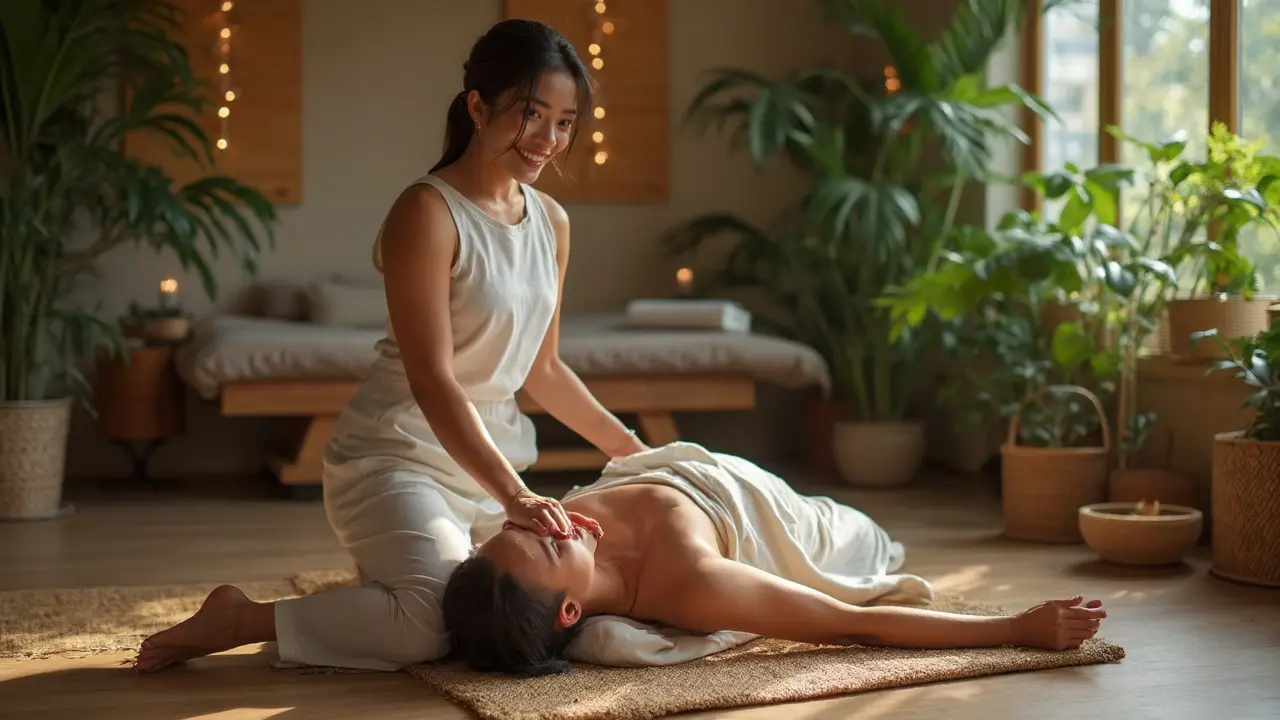Looking for relief that’s way more than your usual back rub? Thai massage totally flips the script on what most people expect from a massage, especially here in London where spa menus are endless. Forget lying passively while someone kneads your shoulders—this style gets you moving, stretching, and maybe even cracking a smile at how unfamiliar some of the positions feel (but in a good way!).
Even if you’re not flexible or you’ve never been to Thailand, there’s no gatekeeping here. Therapists guide you through everything step by step, and you can wear loose, comfy clothes—no oil or undressing required. Think of it as yoga you don’t have to actually do yourself, with benefits that last long after you walk out the door. If sleep’s been elusive or your mood’s been meh, you might notice the difference in just one session.
Getting the most out of Thai massage isn’t about picking the fanciest spa downtown or following a fad. It comes down to understanding what the treatment offers and telling your therapist exactly what you need. So, if you’re curious about swapping stress for something way more energizing, traditional Thai massage in London could be your new go-to. Let’s unpack what really happens during a session and what you should know before booking.
- What Makes Thai Massage Different?
- The Thai Massage Experience in London
- Benefits Beyond Relaxation
- How to Pick the Right Thai Spa
- Tips for First-Timers
What Makes Thai Massage Different?
If you’ve only ever had a classic oil massage, Thai massage might feel like a total curveball. The first big difference? You keep your clothes on. Instead of oils and creams, you wear comfy gym-style clothes and lie on a padded mat on the floor. That’s the standard setup in most thai massage london studios—no surprise nudity or cold tables.
Another twist: your therapist uses their whole body to work your muscles—hands, elbows, knees, and sometimes feet. It combines pressure point work with a series of assisted stretches that look kind of like yoga but feel more like a supercharged personal stretch. You’ll find yourself getting gently pulled, twisted, and rocked, all in a steady, calm rhythm.
The approach comes straight from centuries-old traditions. Thai massage is rooted in a belief system that blends elements of yoga, Ayurveda, and Chinese medicine. Practitioners focus on energy lines (called "Sen" lines) that run through your body. The idea is that pressing and stretching along these lines helps your body balance itself out and boosts your sense of wellbeing.
Here’s how Thai massage stands out, point by point:
- Full-body assisted stretching (think lazy yoga)
- No oils or lotions needed
- Targeted rhythmic pressure along energy lines
- Mats on the floor, not standard massage tables
- Clothes stay on: wear something loose and comfy
Curious about what people get out of it, beyond just feeling bendy? Check out a quick breakdown:
| Type of Massage | Stretching | Pressure Points | Clothing | Location |
|---|---|---|---|---|
| Thai Massage | Yes | Yes | Loose clothes kept on | Mat on floor |
| Swedish Massage | No | Some | Undressed, under sheet | Massage table |
| Deep Tissue | No | Yes | Undressed, under sheet | Massage table |
One handy fact: if you’re worried about flexibility, don’t be! You don’t have to be bendy already—the therapist adapts everything to what your body can actually do. That’s why so many people go back for regular sessions, whether it’s to boost flexibility, ease muscle tension, or just shake off stress after a week at work.
The Thai Massage Experience in London
Booking a thai massage london session isn’t just about relaxation—it’s a little adventure for your body and mind, right in the heart of the city. Whether you’re wandering into a street-level spa in Soho or stepping into a tucked-away studio in Shoreditch, most places stick to the authentic routine. Before anything starts, a therapist will usually ask about your pain points, daily activities, and if you’re dealing with anything like sciatica or tight shoulders from desk work.
Traditional Thai massage is done fully clothed on a firm floor mat (not a raised table). You’ll get changed into loose, clean trousers and a top that allows easy movement—they’re usually provided by the spa. Expect gentle pulls, slow stretches, and palm or thumb pressure up and down the energy lines (known as “Sen” in Thai massage). Don’t be surprised if your therapist uses their elbows, knees, or even their feet to get into the trickier spots.
Here’s what a typical session often looks like:
- You remove your shoes and slip into spa clothes. No oil, so you can head right back to work afterwards without feeling greasy.
- The therapist may start at your feet, working upwards in a careful sequence meant to boost circulation and energy levels.
- Movements can feel a bit like assisted yoga, but you’re fully supported the whole way. If anything feels intense or uncomfortable, just say so—therapists adjust their technique all the time.
- After the session, you’ll usually be offered water or warm tea. This is meant to help flush out toxins released from your muscles.
Some London Thai spas offer extra add-ons like herbal compresses (hot pouches stuffed with Thai herbs) or even short foot massage upgrades. Opening hours in London are pretty generous, with popular spots open from 10am to 10pm—even later in some West End locations. Don’t be surprised if your therapist knows a little about anatomy; legit spots often have staff who’ve trained in Bangkok or Chiang Mai.
| Aspect | What to Expect |
|---|---|
| Session Length | 60-90 minutes standard |
| Clothing | Loose ‘pajama’ style, provided by most spas |
| Average Cost (2025) | £50 – £80 for 1 hour |
| Popular Areas | Soho, Shoreditch, South Kensington |
| Extras Offered | Herbal compress, reflexology foot massage |
If you want the real deal, look for places that mention their therapists’ training, or associations like the UK Thai Therapy Association. That means you’ll get a safer, more therapeutic experience every time.

Benefits Beyond Relaxation
Traditional Thai massage isn’t just about chilling out (though that’s definitely part of it). The real magic goes deeper, and science actually backs up a bunch of these claims. When people think thai massage london experiences are just glorified stretching, they miss out on the health perks far beyond relaxation.
For starters, there are a ton of ways this style of massage can give your body and mind a real boost:
- Eases muscle stiffness and joint pain: The mix of pressure and gentle movement helps loosen up stubborn spots and increase your range of motion.
- Improves circulation: All that targeted pressure gets your blood pumping, which can help with swelling and even make your skin look fresher.
- Better sleep quality: A study from a UK-based sleep institute found that people reported better, deeper sleep after trying traditional Thai massage for several weeks.
- Reduces anxiety and boosts mood: The blend of mindful breathing, muscle work, and rhythmic movement helps calm those racing thoughts. It’s often recommended after stressful days or jet lag.
- Posture upgrade: Long hours at your desk or slumped on the Tube? Regular Thai massage can help straightening things out so you’re not aching by lunchtime.
Here’s a quick look at some real numbers that make the case even stronger:
| Benefit | Reported Improvement (%) | Notes |
|---|---|---|
| Muscle Flexibility | 68% | After 4 weekly sessions |
| Stress Levels | 61% | According to local clinic surveys |
| Sleep Quality | 55% | Within first month |
Don’t expect an overnight miracle, but after a few sessions, people usually start noticing less tension, better focus, and a new kind of energy. If you’re looking to manage stiffness, sleep troubles, or just daily stress, Thai massage is way more than an hour of pampering.
How to Pick the Right Thai Spa
London’s packed with massage places claiming to offer the real deal, but not every spot knows what authentic Thai massage is. Whether you want to fix back pain or just chill out, picking the right spa makes all the difference. Here’s what actually matters when choosing your thai massage london experience.
- Look for Thai-certified therapists: Staff should have real training, often from Thailand’s main schools like Wat Pho or ITM. Many London spas will display certification, but don’t be shy about asking before you book.
- Check reviews by real people: Not just the five-star raves—read the honest, detailed ones that mention how clean the place is, if therapists listen, and what the vibe feels like. Google and Tripadvisor are good starting points.
- Tidy, calming setting: You want a private, uncluttered space with clean linens and proper mats or beds. If possible, pop in for a quick look first or check out photos online. Cleanliness is non-negotiable—if anything feels off, walk away.
- Services on the menu: Authentic Thai spas offer more than standard massages. They often include herbal compress, traditional foot massage, and sometimes Thai-style facials. The more specialized their offering, the more likely they know traditional methods.
- Transparent pricing: Prices for Thai massage in London can range from £50 for a short session (30 minutes) to £120 for an intensive two-hour appointment. Make sure there are no hidden charges for basics like towels or tea.
| Feature | What to Look For |
|---|---|
| Therapist Certification | Accredited by Thai massage schools |
| Cleanliness | Spotless rooms, fresh linens |
| Customer Reviews | Recent, detailed, real experiences |
| Range of Services | More than just basic massage |
| Pricing | Clear, upfront, reasonable rates |
One extra tip: plenty of real Thai spas offer complimentary herbal teas before or after your session—a small but telling detail. If you want a personal touch, call ahead and ask how they customize sessions. It can help you spot a business that actually cares about what clients need, not just turning over appointments.

Tips for First-Timers
Trying thai massage london for the first time doesn’t need to be a mystery or make you nervous. Here’s what you should know so you walk in feeling ready instead of confused.
- Wear the right clothes: Leave the fancy outfits at home. Most places give you loose pants and a top, but if not, bring stretchy gym clothes.
- Don’t force flexibility: If you’re not bendy—that’s normal. Therapists work with your limits. Tell them if something hurts or feels off—they don’t expect you to move like a gymnast.
- Communicate clearly: Say if you want more or less pressure, have any injuries, or if you’re just nervous. Most therapists speak good English and appreciate feedback.
- Arrive early: Get to the spa 10 minutes before your appointment. It gives you a minute to relax and fill out any quick health forms.
- Hydrate after: Like other massages, Thai massage helps release toxins. Drink water after to help flush your system and avoid headaches.
Here’s an actual stat to help calm first-timer jitters: According to research published in the International Journal of Therapeutic Massage & Bodywork, 82% of Thai massage clients report improved flexibility and reduced stress after only two sessions. So you’re likely to see positive effects quickly, even if you’re new.
| Common First-Time Concerns | What Actually Happens |
|---|---|
| Worried about pain | Pressure is adjusted to your comfort (just say the word) |
| Don’t know what to wear | Spa gives you clothes or you bring your own loose ones |
| Feeling awkward about positions | Therapist guides you through everything |
| Not flexible | No problem—moves are tailored to you |
For a little professional reassurance:
“Thai massage is often misunderstood as painful or too intense, but it’s really about customizing pressure and stretch to each person. Most clients leave saying it felt far better than they expected.” — Tomoko Sawada, senior therapist at Thai Oasis Spa, London
The takeaway? You don’t need to prep like you’re running a marathon. Just show up, let your therapist know how you’re feeling, and enjoy the experience.

